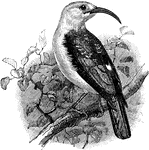
Samoset in the Streets of Plymouth
Samoset (ca. 1590 – 1653) was the first Native American to make contact with the Pilgrims.
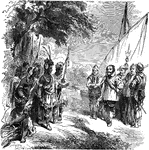
Smith's Meeting with Powhatan
The meeting between Capt. John Smith, founder of the Virginia colony, and Powhatan, the chief of the…
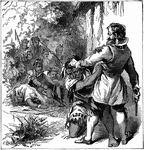
Smith Subduing Powhatan
The meeting between Capt. John Smith, founder of the Virginia colony, and Powhatan, the chief of the…

Stony Point
The Battle of Stony Point was a battle of the American Revolutionary War. Here is a view of Stony Point…

Hedera colchica
Hedera (English name ivy, plural ivies) is a genus of 15 species of climbing or ground-creeping evergreen…

Jasminum grandiflorum
Jasminum grandiflorum (chameli in Hindi) is a species of jasmine native to South Asia. In India, its…

Dodder
An illustration of Dodder including: 1, flower removed from; 2, Calyx; Ovary cut acrossed; 4, fruit…
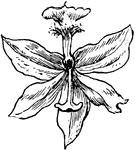
Tuberous Grass Pink
The Tuberous Grass Pink (Calopogon tuberosus) is an orchid native to the eastern United States from…
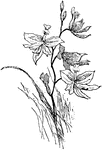
Tuberous Grass Pink
The Tuberous Grass Pink (Calopogon tuberosus) is an orchid native to the eastern United States from…
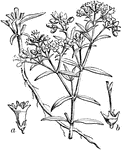
Chay Root
The Chay Root (Oldenlandia umbellata) is a plant native to India used for the red dye that can be extracted…
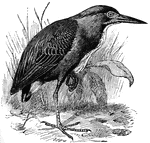
Green Heron
The Green Heron (Butorides virescens) is a small wading bird in the Ardeidae family of herons, and is…

Vertebral Column of Hymenochirus
African dwarf frogs of genus Hymenochirus, also known as dwarf aquatic frogs, are frogs native to Sub…
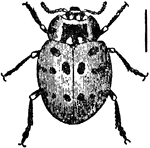
Ladybug
Coccinellidae is a family of beetles, known variously as ladybirds (British English, Australian English,…

Rabbit Stick
"A throwing-stick, similar to the Australian boomerang, used by the Indians of the southwestern United…
Silver Fir Cone and Foliage
An illustration of a silver fir cone and a small branch. Silver Fir or European Silver Fir (Abies alba)…
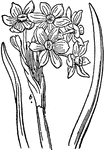
Narcissus
Narcissus is the botanic name for a genus of mainly hardy, mostly spring-flowering, bulbs in the Amaryllis…
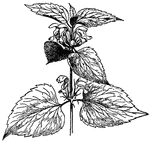
Lamium Album
Lamium album (White Deadnettle) is a flowering plant in the family Lamiaceae, native throughout Europe…
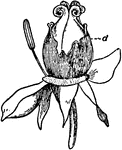
Peony Bud
Paeonia) is the only genus in the flowering plant family Paeoniaceae. They are native to Asia, southern…

Foxglove
An illustration of: 1, Coralla cut open showing the four stamens; 2, Unripe fruit (lengthwise); 3, ripe…
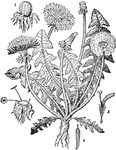
Dandelion
Taraxacum is a large genus of flowering plants in the family Asteraceae. They are native to Europe,…
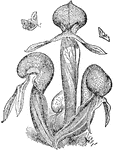
Darlingtonia Californica
Darlingtonia californica also called the California Pitcher plant, Cobra Lily, or Cobra Plant, is a…
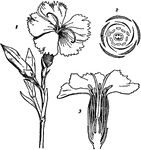
Dianthus
Dianthus is a genus of about 300 species of flowering plants in the family Caryophyllaceae, native mainly…
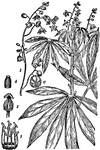
Yuca
The cassava, yuca, manioc, mogo or mandioca (Manihot esculenta) is a woody shrub of the Euphorbiaceae…

Holly
Ilex aquifolium (Holly, or European Holly to distinguish it from related species) is a species of holly…
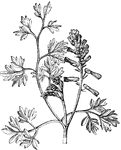
Fumitory
Fumaria is a genus of about fifty annual herbaceous flowering plants in the family Fumariaceae, native…

Fumitory (Side-view)
An illustration of the side-view of the fumitory flower Fumaria is a genus of about fifty annual herbaceous…

Fumitory Flower (Longitudinal Section)
An illustration of a longitudinal section of the fumitory flower. Fumaria is a genus of about fifty…
Fumitory Flower Anther
An illustration of a fumitory flower anther. Fumaria is a genus of about fifty annual herbaceous flowering…
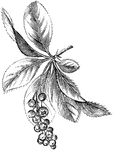
Berberis
An illustration of a berberis branch. Berberis (Bér-be-ris, barberry, pepperidge bush) a genus…
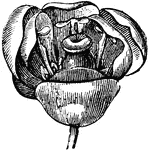
Berberis Flower
An illustration of the berberis flower. Berberis (Bér-be-ris, barberry, pepperidge bush) a genus…
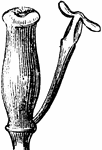
Pistil and Stamen of Burberis
An illustration of the a stamen and pistil of the berberis plant. Berberis (Bér-be-ris, barberry,…

Fruit of Berberis
An illustration of the berberis fruit. Berberis (Bér-be-ris, barberry, pepperidge bush) a genus…
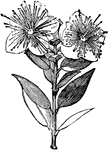
Myrtle
The Myrtle (Myrtus) is a genus of one or two species of flowering plants in the family Myrtaceae, native…
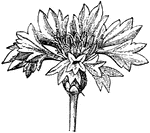
Inflorescence of a Cornflower
An illustration of the inflorescence of the cornflower. Centaurea cyanus ('Cornflower, Bachelor's button,…

Ray-floret of a Cornflower
An illustration of a ray-floret of the cornflower. Centaurea cyanus ('Cornflower, Bachelor's button,…
Disk-floret of a Cornflower
An illustration of a disk-floret of the cornflower. Centaurea cyanus ('Cornflower, Bachelor's button,…
Disk-floret of a Cornflower (Longitudinal
An illustration of a longitudinal section view of a disk-floret of the cornflower. Centaurea cyanus…

Winter Heath
Erica carnea (Winter heath, Winter Flowering Heather, or Spring heath; syn. E. herbacea, E. mediterranea)…
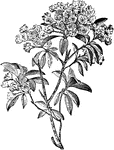
Mountain-laurel
Kalmia latifolia, commonly called Mountain-laurel or Spoonwood, is a flowering plant in the family Ericaceae,…

Comfrey
Comfrey (also comphrey) is an important herb in organic gardening, having many medicinal and fertilizer…

Comfrey Flower
Comfrey (also comphrey) is an important herb in organic gardening, having many medicinal and fertilizer…

Comfrey (Longitudinal Section)
Comfrey (also comphrey) is an important herb in organic gardening, having many medicinal and fertilizer…

Sepal and Fruit of Comfrey
Comfrey (also comphrey) is an important herb in organic gardening, having many medicinal and fertilizer…
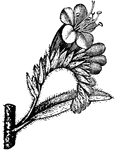
Viper's Bugloss Inflorescence
Echium vulgare (Viper's Bugloss) is a species of Echium native to most of Europe, and western and central…

Viper's Bugloss Flower
Echium vulgare (Viper's Bugloss) is a species of Echium native to most of Europe, and western and central…
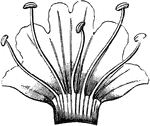
Viper's Bugloss Corolla and Stamens
Echium vulgare (Viper's Bugloss) is a species of Echium native to most of Europe, and western and central…

Beech
An illustration of a flowering branch and empty cupule of beech. Beech (Fagus) is a genus of ten species…
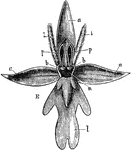
Fly Orchid
Fly orchid (Ophrys insectifera) is a plant of the family Orchidaceae, a native of the British Isles…
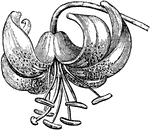
Turk's Cap Lily
Lilium martagon (Martagon or Turk's cap lily) is a species of lily. It has a widespread native region…

Lily of the Valley
Convallaria majalis, commonly known as the Lily of the Valley or Lily-of-the-Valley, is the only species…

Hepatica
An illustration of liverwort (Hepatica): a, Thalloid stem with female branches; b, Thalloid stem with…
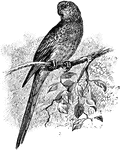
Elegant Parrot
The Elegant Parrot (Neophema elegans) is a grass parakeet with the synonym Euphema elegans native to…
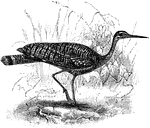
Sunbittern in Swamp
The Sunbittern (Eurypyga helias) is a bird native to the tropical regions of America.

Snail Kite on Branch
A Snail Kite (Rostrhamus sociabilis) is a bird of prey native to Florida in the Accipitridae family…
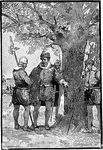
Croatan Carved into Tree at Roanoke
John White finds the only clue to the disappearance of the "Lost Colony" of Roanoke: a tree carved with…

Fred Ransom and a Native American
From, Bache's book The Young Wrecker, the boy Fred Ransom defends himself against a Native American…

Osceola, Chief of the Seminoles
Chief Osceola of the Florida Seminole Indians stands proudly at his tribe's village.

Osceola, Chief of the Seminoles
(1804-1838) Osceola was a war chief of the Seminole Indians in Florida, most recognized for his leadership…

Mud Snake Slithering through Grass
The Mud Snake (Farancia abacura) is a reptile in the Colubridae family of colubrid snakes native to…
